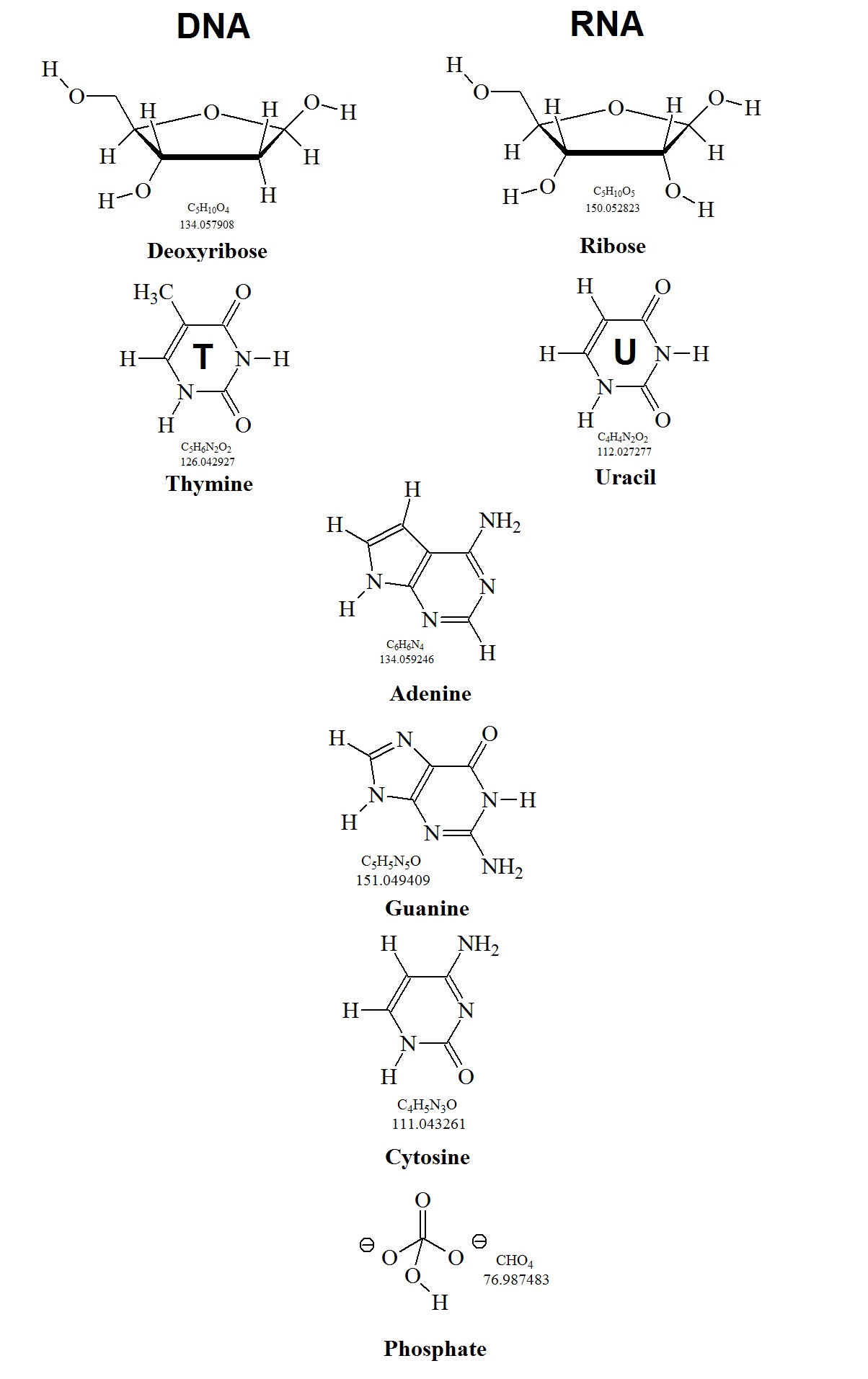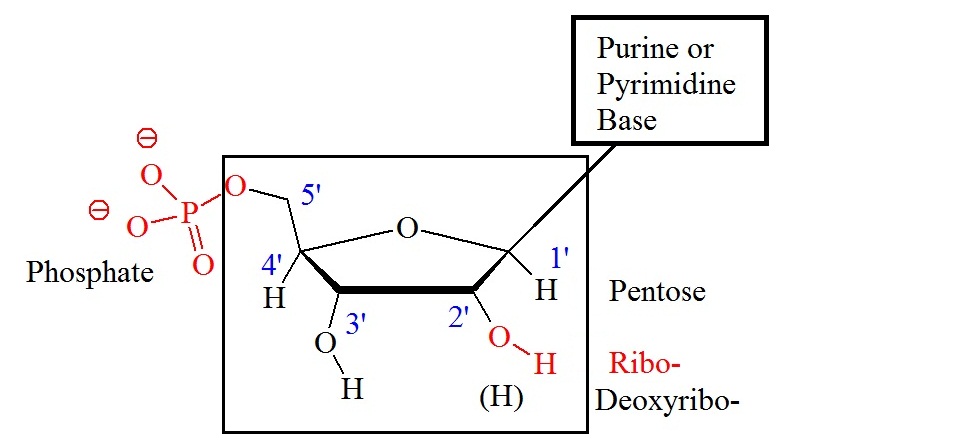Niacin, Nicotinic acid, Vitamin B3
Niacin, nicotinic acid, or vitamin B3 is awater soluble vitamin that is a building block for the coenzymes nicotinamide adenine dinucleotide (NAD+) and nicotineamide adenine dinucleotide adenine dinucleotide (NADP+). NAD+ is a carrier of two electron equivalents for the oxidation of carbohydrates during the synthesis of adenosine triphosphate (ATP). The nicotinamide ring in NAD+ and NADP+ is capable of accepting two electrons and a hydrogen ion to produce the reduced forms of these compounds. The redox role of NAD+ is well established, however, recent evidence indicates that NAD+ is involved in the regulation of diverse pathways as well some of which appear to control life span. In general, NADH is produced by oxidative reactions such as those found in the citric acid cycle. Its reducing power is the driving force during oxidative phosphorylation to produce ATP. NADPH is primarily used in biosynthetic reactions that require reducing power. Both coenzymes, NADH and NADPH are involved in many metabolic reactions. This water soluble vitamin can be analyzed by classical high-performance liquid chromatography (HPLC) using ultra-violet (UV) detection or the more recently developed liquid chromatography-tandem mass spectrometry LC-MS(MS) techniques.
Compared to other vitamins the structure of niacin is relatively simple. It contains a pyridine ring with a single carboxylate group (see figure 1 below). The amide derivative, nicotinamide, has a similar vitamin activity.
![]()
Figure 1: Chemical formula, molecular weight and van-der-Waals model for nicotinic acid (Vitamin B3).
Food sources rich in niacin include liver and other meats, yeast, peanuts, wheat germ, and fish. The human body can also produce niacin as a byproduct oftrypthan metabolism. Approximately 2% of dietary tryptophan is metabolized by this pathway. The estimate is that 60 mg of tryptophan is equivalent to 1 mg of niacin. A balanced diet is thought to contain 600 mg of tryptophan per day. This amount contributes over half or an individual’s niacin requirement. Niacin was identified as a vitamin when the need arose to cure pellagra in the early twentieth century.
Pellagra is a disease caused by the lack of niacin or an decreased intake of tryptophan. Niacin is sometimes also called the “pellagra preventing factor”. An excessive intake of leucine or a deficiency of the amino acid lysine can lead to a deficiency in niacin as well. If untreated, pellagra can kill within several years. Pellagra is a common disease in Africa, Indonesia, North Korea, and China. Poor, homeless, alcohol-dependent, or psychiatric patients who refuse food can also show clinical signs of pellagra. Any human, including a vegetarian, who relies on food sources with limited amounts of niacin risks the development of pellagra.
What caused the occurrence of pellagra in eighteenth century Europe and later in the southern United States?
In 1735, a Spanish physician noticed for the first time symptoms of this strange disease. He called it mal de la rosa or the disease of the rose. The disease spread geographically with the introduction and cultivation of corn in Europe. In Italy it became known as pelleagra or rough skin, hence the term pellagra. In the first half of the 1900s the disease reached epidemic proportions in the United States producing at least 250,000 cases and 7,000 deaths per year for several decades in the southern states alone. Gradually, an association between pellagra and corn consumption was observed. Ultimately, research confirmed that a pellagra-preventative (P-P) factor, missing from corn, was necessary to prevent and cure pellagra in humans. Furthermore in 1937, it was discovered that nicotinic acid could cure black tongue in dogs. Black tongue was an early animal model for pellagra. In 1951, it was found that niacin in corn is biologically unavailable. However, it can be released by exposure to alkaline pH. It appears that Native Americans who used corn as a dietary staple have long known about this. It is well known that many Native American societies did processes their corn with alkali before consumption.
Presently serious outbreaks still continue to occur in some developing countries. The fortification of grain products and an improved standard of living have limited the occurrence of the disease.
Niacin and cancer.
High levels of serotonin produced from tryptophan are found in carcinoid cancers. Patients with this type of cancer will be at risk for niacin deficiency if their intake of preformed niacin is low.
Carcinoid tumor starts in the hormone-producing cells of various organs and most often develop in the gastrointestinal tract, in organs such as the stomach or intestines, or in the lungs. In addition, a carcinoid tumor can also develop in the pancreas, a man’s testicles, or a woman’s ovaries and more than one carcinoid tumor can occur in the same organ.
Niacin and aging
More recent genetic research revealed additional salvage pathways for the synthesis of NAD+. Belenky et al. (2007) reported in the Journal Cell that nicotinamide riboside regulates Sir2 deacetylase activity and life span in yeast. Nicotinamide riboside is a newly discovered NAD+ precursor which is converted to nicotinamide mononucleotide by specific nicotinamide riboside kinases, Nrk1 and Nrk2. Nicotinamide riboside is an NAD+ precursor present in metabolisms from yeast to mammals. Nicotinamide riboside contains a nicotinamide ring structure connected to a ribose. It is a source of Vitamin B3. Belenky et al. discovered that exogenous nicotinamide riboside promotes Sir2-dependent repression of recombination, improves gene silencing, and extends lifespan without calorie restriction. In addition, nicotinamide riboside has been reported to increase NAD+ levels. Nicotinamide riboside acts on two pathways, the Nrk1 pathway, and the Urh1/ Pnp1/Meu1 pathway. However, the Urh1/ Pnp1/Meu1 pathway is Nrk1 independent. Both nicotinamide riboside salvage pathways contribute to NAD+ metabolism in the absence of nicotinamide riboside supplementation.
Nicotinamide riboside in food
Apparently nicotinamide riboside is found in milk and potentially in beer.
References
Peter Belenky, Frances G. Racette, Katrina L. Bogan, Julie M. McClure, Jeffrey S. Smith, Charles Brenner; Nicotinamide Riboside Promotes Sir2 Silencing and Extends Lifespan via Nrk and Urh1/Pnp1/Meu1 Pathways to NAD+. Cell, Volume 129, Issue 3, 4 May 2007, Pages 473-484.
Katrina L. Bogan and Charles Brenner; Nicotinic Acid, Nicotinamide, and Nicotinamide Riboside: A Molecular Evaluation of NAD+ Precursor Vitamins in Human Nutrition. Annu. Rev. Nutr. 2008. 28:115–30.
Cantó C, Houtkooper RH, Pirinen E, et al. The NAD+ precursor nicotinamide riboside enhances oxidative metabolism and protects against high-fat diet induced obesity. Cell metabolism. 2012;15(6):838-847. doi:10.1016/j.cmet.2012.04.022.
Chi, Y; Sauve, A. A. (2013). "Nicotinamide riboside, a trace nutrient in foods, is a vitamin B3 with effects on energy metabolism and neuroprotection". Current Opinion in Clinical Nutrition and Metabolic Care16 (6): 657–61.
John M. Denu; Vitamins and Aging: Pathways to NAD+ Synthesis. Cell. Volume 129, Issue 3, 4 May 2007, Pages 453–454.
Robert B. Rucker ... [et al.]. editors; Handbook of vitamins - 4th ed., 2007. ISBN-13: 978-0-8493-4022-2 (hardcover : alk. paper) ISBN-10: 0-8493-4022-5 (hardcover : alk. paper).
W E Schreiber; Medical aspects of biochemistry. Pp 282. Little, Brown & Co, Boston, USA. 1984. ISBN 0–316–77473–1.





 1: 109 copies/PCR 2: 108 copies/PCR 3: 107 copies/PCR
1: 109 copies/PCR 2: 108 copies/PCR 3: 107 copies/PCR






.jpg)

.jpg)

.jpg)








